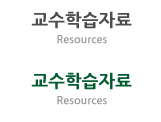검색결과 102 건의 컨텐츠
강의
-
markets for factors of production_경제원론 17강
[ 강의 > 이화수업 ] 2013.09.25
markets for factors of production 생산요소시장1. concept of factor of production 생산요소시장의 개념2. input demand and output supply 투입물 수요와 산출물 공급3. the supply ...
-
public goods & common resourcese_경제원론 11강
[ 강의 > 이화수업 ] 2013.09.25
public goods & common resources 공공재와 공유자원1. the different kinds of goods 재화의 종류2. the free-rider problem 무임승차자 문제3. cost-benefit analysis 비용편익 ...
-
Images of korea in tourism posters from the 1970s and 1980s_한국 문화 유산의 이해 15강
[ 강의 > 이화수업 ] 2013.09.24
Images of korea in tourism posters from the 1970s and 1980s 1970년~ 1980년대 관광 포스터에 나오는 한국의 이미지1.symbols of specific cultures or nations 국가와 문화의 구체적인...
-
Rites of passage in Korea_한국 문화 유산의 이해 3강
[ 강의 > 이화수업 ] 2013.09.24
Rites of passage in Korea 한국의 통과의례1. Rites of passage in traditional Korean culture 한국문화에서의 통과의례2. Procedures and meaning of rites &nb...
-
[ 강의 > 이화수업 ] 2013.09.24
Overview of Korea 한국의 개요 : Geographical, historical, ethnic ,lingual features and mythological foundation1. Korea, its geographical features ...
-
Understanding Korean Cultural Heritage Overview_한국 문화 유산의 이해 개요
[ 강의 > 이화수업 ] 2013.09.24
Introduction 소개 syllabus 강의 계획서 evaluation critria 평가 기준
-
Population: Structure and Distribution_지리학으로 본 한국의 문화와 환경 11강
[ 강의 > 이화수업 ] 2013.09.06
Population: Structure and Distribution 인구 : 구조와 분포1. Dynamics of population growth in Korea 한국의 인구 성장 역학2. Characteristics of population distributi...
-
Rural Communities and Tourism_지리학으로 본 한국의 문화와 환경 8강
[ 강의 > 이화수업 ] 2013.09.06
지방 공동체와 관광 Rural Communities and Tourism1. Development of consanguineous villages 동족 마을의 발전2. Location and Types of villages and houses 마을과 가옥의 위치 ...
-
Geographical perception and Cultural geography of Korea_지리학으로 본 한국의 문화와 환경 7강
[ 강의 > 이화수업 ] 2013.09.06
지리학적 인식과 한국의 문화지리학 Geographical perception and Cultural geography of Korea1. History of Korean people 한국인의 역사2. Korean language and its chara...
-
Changes in comparative perspective_사회정책과 여성 5강
[ 강의 > 이화수업 ] 2013.09.04
changes in comparative perspective1. fetility rate2. female emplyoment rate3. marriage and children4. family types5. changes in attitudes












